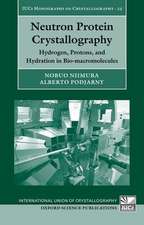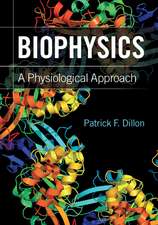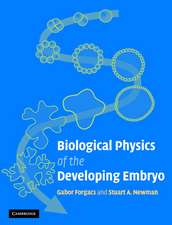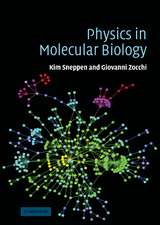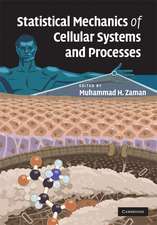Discovering Life, Manufacturing Life: How the experimental method shaped life sciences
Autor Pierre V. Vignais, Paulette M. Vignaisen Limba Engleză Paperback – 13 noi 2014
| Toate formatele și edițiile | Preț | Express |
|---|---|---|
| Paperback (1) | 945.45 lei 43-57 zile | |
| SPRINGER NETHERLANDS – 13 noi 2014 | 945.45 lei 43-57 zile | |
| Hardback (1) | 956.03 lei 43-57 zile | |
| SPRINGER NETHERLANDS – iul 2010 | 956.03 lei 43-57 zile |
Preț: 945.45 lei
Preț vechi: 1152.98 lei
-18% Nou
Puncte Express: 1418
Preț estimativ în valută:
180.91€ • 189.36$ • 150.58£
180.91€ • 189.36$ • 150.58£
Carte tipărită la comandă
Livrare economică 31 martie-14 aprilie
Preluare comenzi: 021 569.72.76
Specificații
ISBN-13: 9789401782036
ISBN-10: 9401782032
Pagini: 428
Ilustrații: X, 418 p.
Dimensiuni: 155 x 235 x 22 mm
Greutate: 0.6 kg
Ediția:2010
Editura: SPRINGER NETHERLANDS
Colecția Springer
Locul publicării:Dordrecht, Netherlands
ISBN-10: 9401782032
Pagini: 428
Ilustrații: X, 418 p.
Dimensiuni: 155 x 235 x 22 mm
Greutate: 0.6 kg
Ediția:2010
Editura: SPRINGER NETHERLANDS
Colecția Springer
Locul publicării:Dordrecht, Netherlands
Public țintă
ResearchCuprins
The Roots of Experimental Science from Ancient Greece to the Renaissance.- The Birth of the Experimental Method in the 17th and 18th Centuries.- The Impact of Determinism in the Life Sciences of the 19th and 20th Centuries.- Challenges for Experimentation on Living Beings at the Dawn of the 21st Century.- Epilogue.
Recenzii
From the reviews:
“A strikingly complete yet highly readable history of biomedical sciences, from BCE to the present, would be invaluable to scientists of all ages. In this well-written work translated from the original French version, accomplished biochemists Pierre Vignais … and Paulette Vignais (emer., CNRS, France) went one step further and painted a seamless picture of the evolution of the scientific method on a superb historical backdrop. … Summing Up: Highly recommended. Students of all levels, researchers/faculty, and professionals.” (B. D. Spiegelberg, Choice, Vol. 48 (5), January, 2011)
“A strikingly complete yet highly readable history of biomedical sciences, from BCE to the present, would be invaluable to scientists of all ages. In this well-written work translated from the original French version, accomplished biochemists Pierre Vignais … and Paulette Vignais (emer., CNRS, France) went one step further and painted a seamless picture of the evolution of the scientific method on a superb historical backdrop. … Summing Up: Highly recommended. Students of all levels, researchers/faculty, and professionals.” (B. D. Spiegelberg, Choice, Vol. 48 (5), January, 2011)
Notă biografică
Pierre VIGNAIS, was a science doctor, doctor of medicine, was treasurer of the Fondation Roux at the Pasteur Institute of Paris. Professor emeritus of Biochemistry of the medical college of the University Joseph Fourier and director of a URA-CNRS at the ECA. He died in September 2006 at the age of 80.
Both he and his wife Paulette published extensively and their contributions are highly regarded in the fields of biochemistry, molecular biology and bioenergetics.
Both he and his wife Paulette published extensively and their contributions are highly regarded in the fields of biochemistry, molecular biology and bioenergetics.
Textul de pe ultima copertă
This book tells the story of how thinkers, over time, have dared to explore using experimental devices and how the experimental method established itself and took a predominant role in the life sciences.
While life sciences continue to advance and knowledge becomes more widespread and accessible, philosophers now focus on problems of ethics particularly with respect to the reproductive functions that contemporary biology is able to manipulate and modify.
Looking at the stunning progress made by scientific thought over the last five centuries we might ask ourselves what were the triggering factors that lead to the experimental method. How did this logical and objective approach to the exploration of various enigmas in nature arise and spread at a particular moment in time in the western world? Was there an influence from the social, religious or political context? Was the energy of a few individuals sufficient to initiate such a revolution?
The authors of this book take us on journey of the mind, from the ancient roots of scientific rationality to today’s irresistible trend in genetic manipulation, particularly focused on human beings. Inevitably this will lead the reader to view the way in which science is done today under a new light. A fascinating discussion, based on concrete examples and experiments, provides food for thought, not only with respect to the experimental method itself, but also regarding the organization of science as it exists today and how it is perceived.
About the authors:
Pierre V. Vignais, a science doctor and a doctor of medicine, was awarded a scholarship of the Fondation Roux at the Pasteur Institute of Paris. Professor emeritus of Biochemistry of the medical college of the University Joseph Fourier and director of a URA-CNRS at the CEA (French Atomic Energy Commission), he received the CNRS Silver Medal and the Grand Prix de l'Académie des Sciences. He died,aged 80, in September 2006.
Paulette M. Vignais, his wife, received her diploma in chemical engineering from the Ecole Nationale Supérieure de Chimie de Paris (ENSCP) and obtained her Ph.D. in biochemistry from the University of Paris. She recently retired from a position of Emeritus director of Research at the CNRS where she directed a CNRS-CEA Unit at the CEA.
While life sciences continue to advance and knowledge becomes more widespread and accessible, philosophers now focus on problems of ethics particularly with respect to the reproductive functions that contemporary biology is able to manipulate and modify.
Looking at the stunning progress made by scientific thought over the last five centuries we might ask ourselves what were the triggering factors that lead to the experimental method. How did this logical and objective approach to the exploration of various enigmas in nature arise and spread at a particular moment in time in the western world? Was there an influence from the social, religious or political context? Was the energy of a few individuals sufficient to initiate such a revolution?
The authors of this book take us on journey of the mind, from the ancient roots of scientific rationality to today’s irresistible trend in genetic manipulation, particularly focused on human beings. Inevitably this will lead the reader to view the way in which science is done today under a new light. A fascinating discussion, based on concrete examples and experiments, provides food for thought, not only with respect to the experimental method itself, but also regarding the organization of science as it exists today and how it is perceived.
About the authors:
Pierre V. Vignais, a science doctor and a doctor of medicine, was awarded a scholarship of the Fondation Roux at the Pasteur Institute of Paris. Professor emeritus of Biochemistry of the medical college of the University Joseph Fourier and director of a URA-CNRS at the CEA (French Atomic Energy Commission), he received the CNRS Silver Medal and the Grand Prix de l'Académie des Sciences. He died,aged 80, in September 2006.
Paulette M. Vignais, his wife, received her diploma in chemical engineering from the Ecole Nationale Supérieure de Chimie de Paris (ENSCP) and obtained her Ph.D. in biochemistry from the University of Paris. She recently retired from a position of Emeritus director of Research at the CNRS where she directed a CNRS-CEA Unit at the CEA.
Caracteristici
The authors combine a classic humanistic intellectual approach with a deep understanding of the fundamental questions in life sciences A fascinating account of how the tools of biologists developed through time, to the point of allowing the manipulation of genes and developmental functions Explains in clear and simple terms the milestone discoveries and inventions in life sciences, from Greek philosophy to the latest achievements of the 21st century Includes supplementary material: sn.pub/extras





